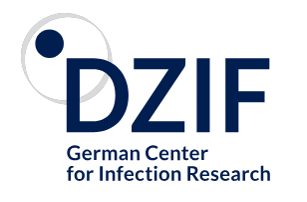TTU 07.709
"DZIF Research Group Molecular Vaccine Design"
Short Summary
Infection-related tumors are ideal targets for therapeutic cancer vaccination, as they provide the opportunity to target antigens that are immunological non-self. High-risk types of human papillomavirus (HPV) cause over 690.000 cancer cases per year, with HPV16 being the most abundant high-risk HPV type, causing over 50% of cervical cancer cases, and the vast majority (80-90%) of HPV-driven carcinomas of the vagina, vulva, anus, penis and oropharynx. Also HPV-induced premalignant lesions cause significant morbidity – in Germany alone, over 140,000 conizations are yearly performed for cervical intraepithelial neoplasia (CIN).
The overall aim of the “Molecular Vaccine Design” group is the development of a functional therapeutic vaccine against persistent HPV16 infections and HPV-mediated malignancies. To this end, in the funding period 2015-2020, we identified and validated candidate HPV16 target epitopes by mass spectrometry and immunological characterization. Furthermore, we generated an orthotopic (vaginal) HPV16 tumor model in MHC-humanized A2.DR1 mice to investigate vaccination-induced anti-tumor effects, and optimized vaccination delivery. In the current funding period, we aim at investigating the HPV epitopes presented on premalignant lesions (e.g. CIN), to tailor the vaccine to this target population. We are continuing to investigate strategies to target migration of vaccination-induced T cells to the HPV-affected anatomical site, for which purpose we have established a second orthotopic tumor model (oropharyngeal). We also will adapt our mouse model to another HLA type, to validate our preclinical findings in a background other than HLA-A2. Anti-tumor vaccinations in the murine models are ongoing. The final aim of the current funding period is translating our validated target epitopes and/or the vaccine into first clinical applications.
Highlights
- A current translational success is the filing of a patent covering validated epitopes, and ongoing negotiations with a clinical stage Biotech company to use them as the basis of developing trTCR T cells for adoptive therapy approaches (complementing our own vaccine strategy). Filed patent: Validated HPV16 T cell targets. EP22181105.2, 2022
- Together with a start-up company producing silica nanoparticles as vaccine carriers, we have filed 3 patent applications and have applied for EXIST funding to further develop a therapeutic HPV16 vaccine based on our validated epitopes and their vaccine carrier. The EXIST application was recently selected for the second round of this two-stage application process. Filed patents: Composition of nanoparticles. EP20174156.8, 2020. Composition of nanoparticles as carrier for HPV-derived immunogenic fragments. EP20196027.5, 2020. Nanoparticles as carrier-system for adjuvants/antigens. EP20196024.2, 2020




